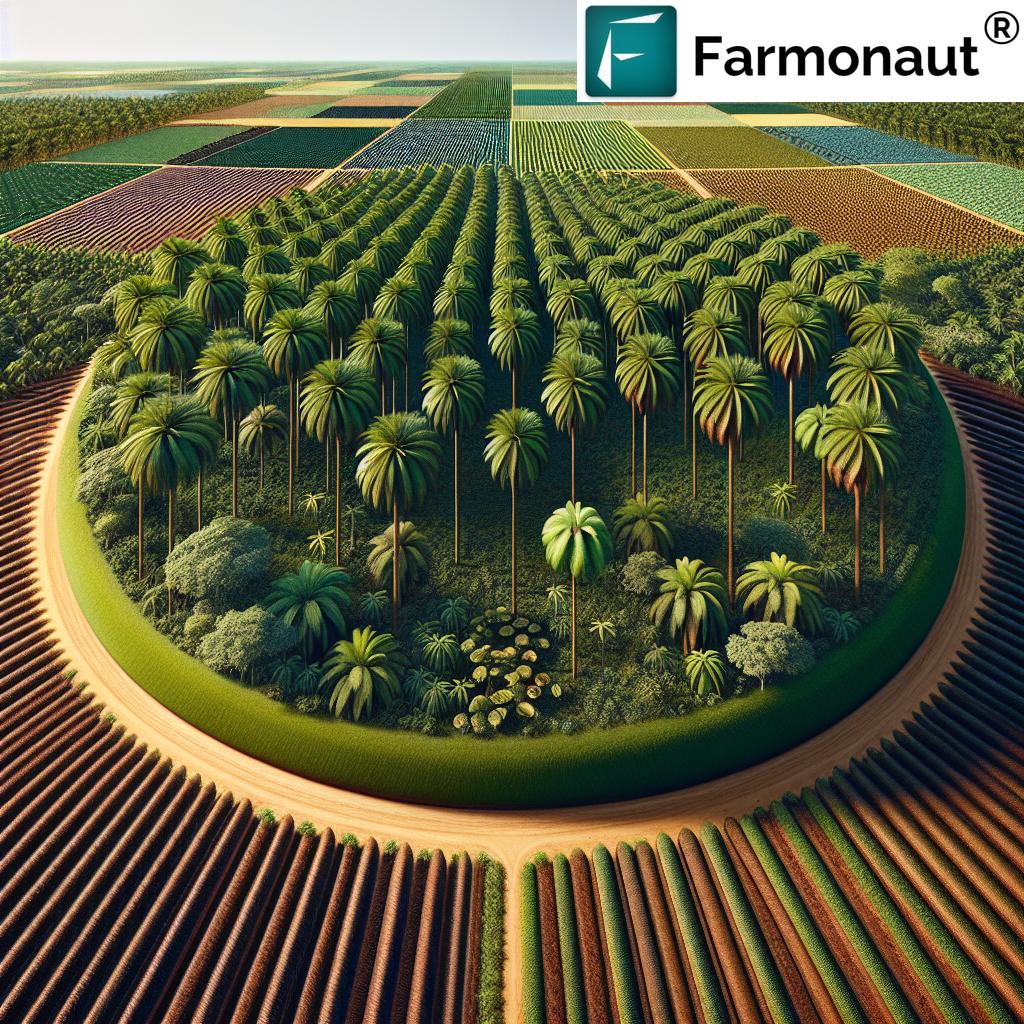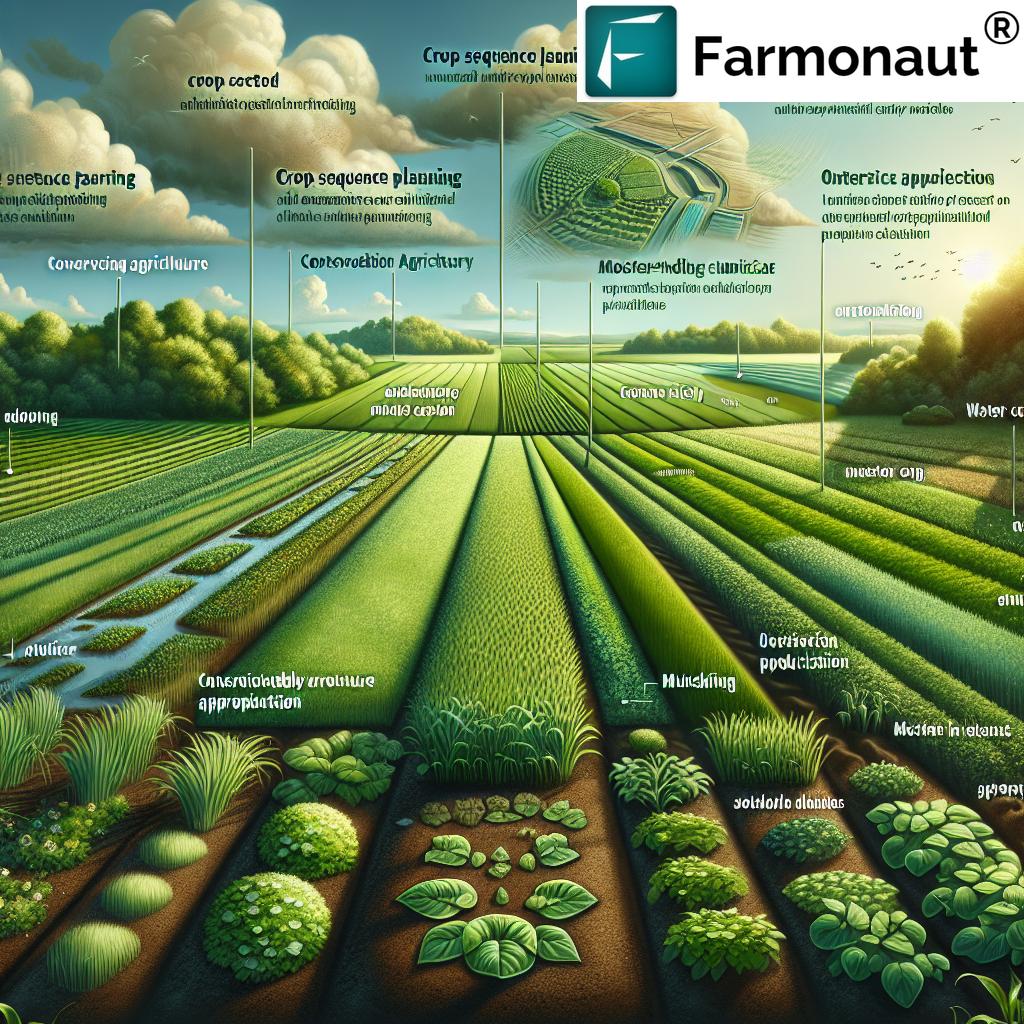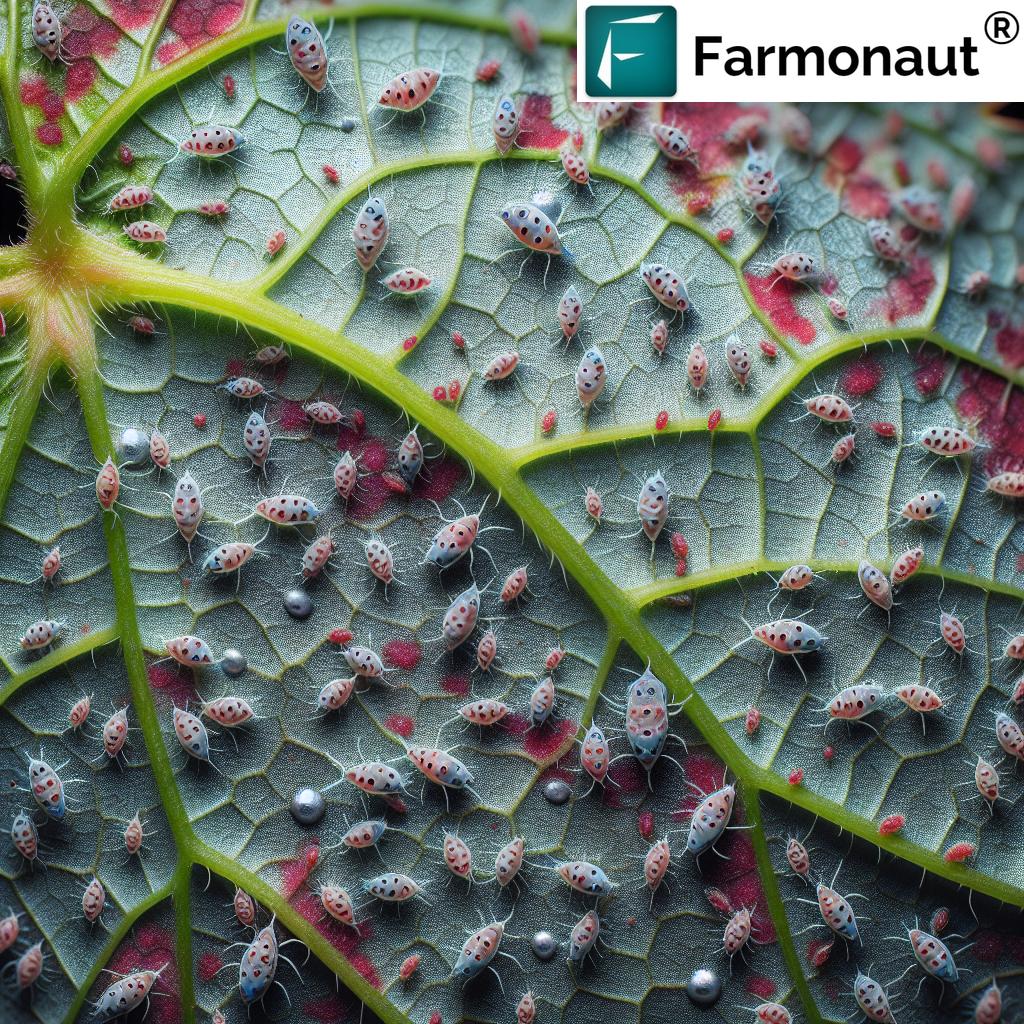How Many Palm Trees Per Acre: Optimal Yield Guide
“Optimal palm tree density ranges from 56 to 64 trees per acre for maximum yield and healthy growth.”
Introduction: Why Palm Tree Density Per Acre Matters
Understanding how many palm trees per acre is essential for every grower aiming to maximize yield, ensure healthy growth, and achieve the economic viability of palm cultivation. Whether you’re establishing a large, commercial plantation of Elaeis guineensis (oil palm), experimenting with Cocos nucifera (coconut), or considering ornamental palms for landscaping or diversified farming, determining the optimal palm tree density per acre is a critical first step.
Optimal planting densities are influenced by several factors, including the species of palm, soil fertility, climate and environmental conditions, chosen spacing system, and the overall goals of your operation. A carefully chosen density impacts not only the immediate yield but the entire lifespan, health, and economic performance of your palm orchard or plantation.
This definitive guide, structured in easy-to-follow sections, will help you understand all the key factors affecting palm yield and teach you how to use proven palm plantation spacing guidelines for a variety of species — so you can make data-driven, practical planting decisions for your location.
Factors Influencing Planting Density
No two palm plantations are identical — and the number of palms per acre that delivers the best yields depends on multiple, interrelated influences. Let’s examine the key factors affecting palm yield and how each impacts your optimal planting design.
1. Palm Species and Growth Habits
- Different palm species display distinct growth rates, root systems, canopy size, and height, leading to varying space requirements.
- For oil palm (Elaeis guineensis), preferred spacing is tighter than for the taller, broader coconut palm (Cocos nucifera).
- Ornamental or dwarf varieties, and species such as date palm or macaúba, have unique spacing needs and density recommendations.
2. Soil Fertility and Type
- A rich, well-drained soil can support higher densities, as it provides more nutrients and water per square meter or acre.
- Poorer or sandy soils may
require wider spacing to reduce competition among palms for resources, ensuring healthy growth.
See: Suitable soil for palm plantations for detailed management advice.
3. Climatic Conditions: Rainfall, Temperature, Humidity
- Climate and environmental conditions have a major influence on palm growth patterns and plantation density.
- Regions with abundant rainfall and moderate temperatures allow for closer spacing, while hotter, drier, or cooler climates may require greater separation to prevent stress and disease.
4. Intended Use and Plantation Objectives
- The basic purpose of your palm cultivation — for oil production, landscape ornamental, fruit, or as part of an intercropping system — affects density decisions.
- Palm trees grown solely for maximum oil yield may be spaced differently from those cultivated for coconuts or landscaping purposes.
Tip: Always consult local guidelines and research on your specific palm variety, as recommendations can vary depending on region and use.
Other Important Factors:
- Age and expected lifespan of the plantation
- Accessibility for mechanized operations and harvesting
- Disease pressure, risk of wind damage, and need for biodiversity or soil conservation
- Labor costs and local economic viability
Choosing an ideal palm tree density per acre is a balance between maximizing yield and minimizing long-term challenges related to crowding, resource competition, or maintenance.
“Proper spacing of 26–30 feet between palm trees significantly boosts fruit production and reduces disease risk.”
Optimal Planting Densities for Major Palm Species
Let’s explore the best planting layouts for the most commercially important palm species, referencing the latest research and practical recommendations. This section covers oil palm planting density as well as the coconut palm planting requirements and details for other key palm varieties.
Oil Palm (Elaeis guineensis)
- Common in West Africa and Southeast Asia, oil palm is one of the highest-yielding tropical crops.
- Recommended optimal density: 143–160 palms per hectare (58–65 palms per acre).
- This balances yield and plantation longevity, while allowing for efficient access and reduced disease spread.
- Spacing suggestion: Most plantations use an equilateral triangle (hexagonal) system with about 28–30 feet (8.5–9 meters) between trees.
Coconut Palm (Cocos nucifera)
- Widely grown in coastal areas across Asia, Africa, and Latin America.
- Tall varieties: Spaced at 7 × 7 meters (23 × 23 ft), or 200 palms per hectare (~80 per acre).
- Dwarf varieties: Often spaced at 8.5 × 8.5 meters (28 × 28 ft), or around 138 per hectare (~56 per acre).
- Spacing can change with soil and rainfall conditions.
Macaúba Palm (Acrocomia intumescens)
- Native to South America, macaúba is increasingly used in sustainable oil production.
- Suggested density: 400 palms per hectare (~162 per acre), but yields begin to drop if density is increased beyond this due to resource competition.
- These palms have a medium canopy and require careful management of spacing to avoid reduced productivity.
Date Palm (Phoenix dactylifera)
- Grown across North Africa and the Middle East for date production; some plantations in Southwest United States.
- Recommended planting density: 45–65 trees per acre, typically at 26–30 feet apart (8–9 meters).
Comparative Density Table: How Many Palm Trees Per Acre?
Below is a comprehensive table summarizing recommended densities, optimal spacing, expected annual yield per tree, and key notes for each main commercial palm species. This side-by-side comparison makes determining the ideal number of palm trees per acre easy for both new and experienced growers.
| Palm Species | Recommended Trees per Acre | Optimal Spacing (m / ft) | Estimated Annual Yield per Tree | Notable Cultivation Tips |
|---|---|---|---|---|
| Oil Palm (Elaeis guineensis) | 58–65 | 8.5–9 m (28–30 ft) | 80–200 kg fruit bunches | Hexagonal/triangular layout best; avoid crowding for sunlight; optimize with satellite monitoring. |
| Coconut Palm (Cocos nucifera) – Tall | 80 | 7×7 m (23×23 ft) | 70–150 nuts | Allow wider spacing for tall varieties; maintain soil fertility for best results. |
| Coconut Palm (Cocos nucifera) – Dwarf | 56 | 8.5×8.5 m (28×28 ft) | 50–120 nuts | Denser planting possible, but monitor for disease. |
| Macaúba (Acrocomia intumescens) | 162 | 5×5 m (16×16 ft) | 60–120 kg fruit | Higher density, but monitor soil moisture and nutrients closely. |
| Date Palm (Phoenix dactylifera) | 45–65 | 8–9 m (26–30 ft) | 40–100 kg dates | Essential to keep spacing wide for airflow and sunlight access. |
Planting Systems, Layouts & Palm Plantation Spacing Guidelines
After defining the density goal, choose a planting system tailored to your land and operational preferences. Proper layout maximizes sunlight exposure, eases harvesting, and supports mechanized maintenance.
Popular Plantation Arrangements
- Monoculture Planting: Single species in uniform rows, favoring mechanization but may limit biodiversity.
- Hexagonal (Triangular) Layout: Offers closer packing, improved wind stability, and even sunlight; especially popular for oil palm.
- Square Layout: Trees at regular intervals both in row and column, facilitating easy navigation and mixed cropping.
- Intercropping with Palm Trees: Palms planted alongside compatible crops (e.g., legumes, fruit trees) to enhance biodiversity and optimize land use. Require careful management to prevent resource competition.
In all systems, accurate tree mapping and use of GPS technology (see Farmonaut Crop, Plantation & Forest Advisory) can help maintain precise spacing and facilitate later yield analysis.
Palm Plantation Spacing Guidelines: Quick Tips
- Use triangle/hexagonal layouts for optimal palm density per acre and canopy exposure.
- For mixed-age plantations, stagger newly planted areas to ease future harvesting logistics.
- Adjust spacing wider in regions with less fertile soils or lower rainfall.
- Monitor tree location mapping via satellite or GPS-based apps for easier maintenance, pruning, and disease control.
Best Conditions for Palm Growth & Soil Requirements
To unlock maximum yields and keep trees healthy, understanding the best conditions for palm growth is vital. Here’s what to watch for regarding soil, rainfall, and climate:
- Soil Fertility: Palms thrive in rich, well-drained soils with pH between 5.5–7.5. Avoid heavy clay or waterlogged areas.
- Water Availability: Steady rainfall of at least 1,500 mm/year is ideal for oil palm and coconut palms.
- Temperature: Most palms require moderate, tropical temperatures (24–32°C / 75–90°F) for best growth and fruit set. Frost is fatal!
- Humidity & Airflow: Humid, but not stagnant, environments keep palms productive and minimize fungal disease. Space trees wide enough for good airflow.
- Nutrient Needs: Maintain adequate levels of potassium, magnesium, boron, and especially nitrogen for sustained fruiting and robust growth.
Good soil preparation, proper initial fertilization, and careful weed management allow you to achieve the ideal palm tree density per acre while ensuring healthy, vigorous trees.
Economic Viability: Balancing Density, Yield, and Plantation Longevity
Many growers believe that planting more trees per acre invariably means higher yield — but higher initial density can lead to significant challenges down the line. Let’s break down the pros and cons:
- Increased planting density may boost early yields but quickly leads to competition for resources (water, nutrients, sunlight), resulting in reduced productivity per palm as the stand matures.
- Overcrowded plantations are prone to pests, disease spread, poor fruit development, and mechanized harvesting difficulties.
- Each species has a density “sweet spot” balancing initial output, labor, and long-term economic viability.
Tip: Choose spacing and density based on your plantation’s expected lifespan (20–30 years for most commercial palms) and local maintenance costs.
Use modern tools (like Farmonaut’s platform) to remotely track soil health, irrigation needs, tree vigor, and predict yield, while reducing resource wastage, labor, and input expenses.
Cost Factors to Evaluate:
- Initial outlay for planting material and soil preparation (varies by density)
- Annual inputs: Fertilizer, irrigation, pruning, pest control, and crop insurance
- Harvesting costs (hand-picked or mechanized harvesting systems)
- Long-term value: Total yield per acre over the plantation’s life
Enhance Economic Viability with Farmonaut:
Monitor crop health, track resources, and maximize yield — all with satellite-based, affordable precision agriculture.
- Access our fleet management tools to optimize resource use and reduce operational costs.
- Utilize carbon footprinting to track and reduce the environmental impact of large-scale palm plantations.
- Take advantage of satellite-verified crop loans and insurance to protect your investment and minimize financial risk.
How Farmonaut’s Precision Agriculture Enhances Palm Plantation Success
At Farmonaut, we’re passionate about empowering growers with science-driven solutions. Our platform offers satellite and AI-powered tools designed to make precision agriculture affordable and efficient — especially for palm growers.
- Satellite-Based Crop Monitoring: Get real-time NDVI imagery to spot irrigation issues, nutrient deficiencies, or disease outbreaks before they reduce your yield.
- Automated Palm Counting: Use our API & app to precisely map each tree, ensuring you hit your target planting density and easily plan replacements or thinning.
- AI-Based Advisory: Receive proactive recommendations through our Jeevn AI system — from fertilizer scheduling to weather risk alerts.
- Blockchain-Enabled Traceability: Secure your fruit or oil’s entire value chain for quality assurance using product traceability.
- Large Scale Management: Our web and mobile apps allow even the largest palm estates to track every hectare and every tree.
Get started today with Farmonaut’s app on web, Android, or iOS — or integrate our satellite data via API:
Developers & large organizations: Explore our open Satellite + AI API for automated detection, palm counting, soil monitoring, and yield prediction. See detailed specs at our API documentation.
Practical Tips for Maximizing Palm Yield & Health
- Choose density carefully: Stick to the species-specific recommendations above and adjust only if your soil and rainfall are far above or below the norm.
- Map before you plant: Use GPS or satellite tools to lay out rows/triangles accurately — this minimizes replanting and ensures trees don’t compete for light.
- Start with healthy planting material: Vigorous seedlings are more likely to thrive, achieve full yield potential, and withstand local disease pressure.
- Monitor soil and leaf nutrient levels: Conduct annual or semi-annual tests and adjust fertilization to sustain growth as trees mature. (Satellite-based monitoring makes this easy!)
- Control weeds and pests: Early outbreak control prevents long-run loss of tree health and yield.
- Thin as needed: For mixed-age or aging stands, consider thinning mature trees that are crowded or shaded to rejuvenate productivity across the plantation.
- Leverage intercropping for biodiversity: Pair palms with shade-tolerant crops (pineapple, ginger, legumes) in the first 3–5 years for improved land use, but monitor for resource competition.
With the right balance of density, layout, care, and technology, your palm plantation can reach consistent, high yields over decades.
Frequently Asked Questions (FAQ): How Many Palm Trees Per Acre
Q1. What is the optimal palm tree density per acre for oil palms?
For oil palms (Elaeis guineensis), most agronomists recommend between 58 and 65 trees per acre, spaced at around 28–30 feet apart in a hexagonal layout. This supports maximum yield while preserving tree health and facilitating harvesting.
Q2. Does soil fertility affect the number of palms I can plant per acre?
Absolutely. Sandy, less fertile soils require wider spacing and thus fewer trees per acre, to reduce competition for nutrients and water. In rich soils with abundant rainfall, you may approach the upper density recommendations for your chosen palm species.
Q3. Can palms be planted closer together if I plan to thin later?
Yes, temporary higher density (“sacrifice planting”) is possible, particularly with oil palm. After the initial years, weaker trees can be thinned to achieve final spacing. However, this approach requires increased management vigilance.
Q4. How do I map and monitor tree locations for my palm plantation?
Use GPS mapping or satellite-based platforms like Farmonaut to accurately record each tree’s position. This is essential for ongoing yield estimation, health monitoring, and planning future replacements or thinning.
Q5. What are the most common mistakes when determining palm tree spacing?
Overestimating what your land and climate can sustain, ignoring species-specific requirements, and failing to account for access (harvesting, irrigation) are frequent errors. Always consult recent local extension service recommendations as well.
Conclusion
Determining how many palm trees per acre is best is far from a one-size-fits-all process. Carefully factor in your chosen palm species, local soil and climate conditions, plantation purpose, and long-term economic viability before finalizing your planting plan. Use the science-backed recommendations in this guide and the tools available from organizations like Farmonaut to map, monitor, and optimize your palm stand — from day one through to decades of maximized yield.
Remember: Proper spacing isn’t just about fitting more trees onto your land — it’s about ensuring healthy, sustainable, and profitable production for years to come.
Take the Next Step: Start Optimizing Your Palm Plantation Today
Get detailed, location-specific satellite data, AI-driven yield forecasting, and resource management via the Farmonaut App or API. Let’s make your plantation thrive!






















